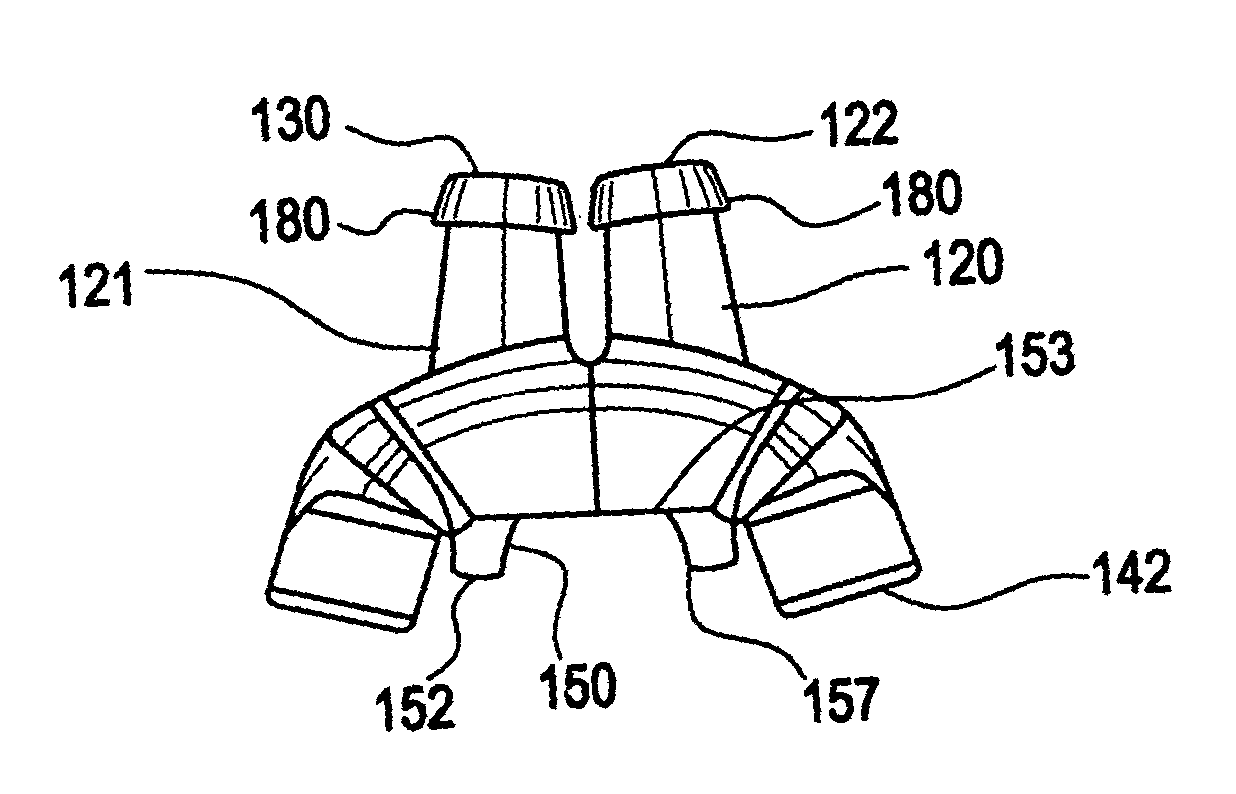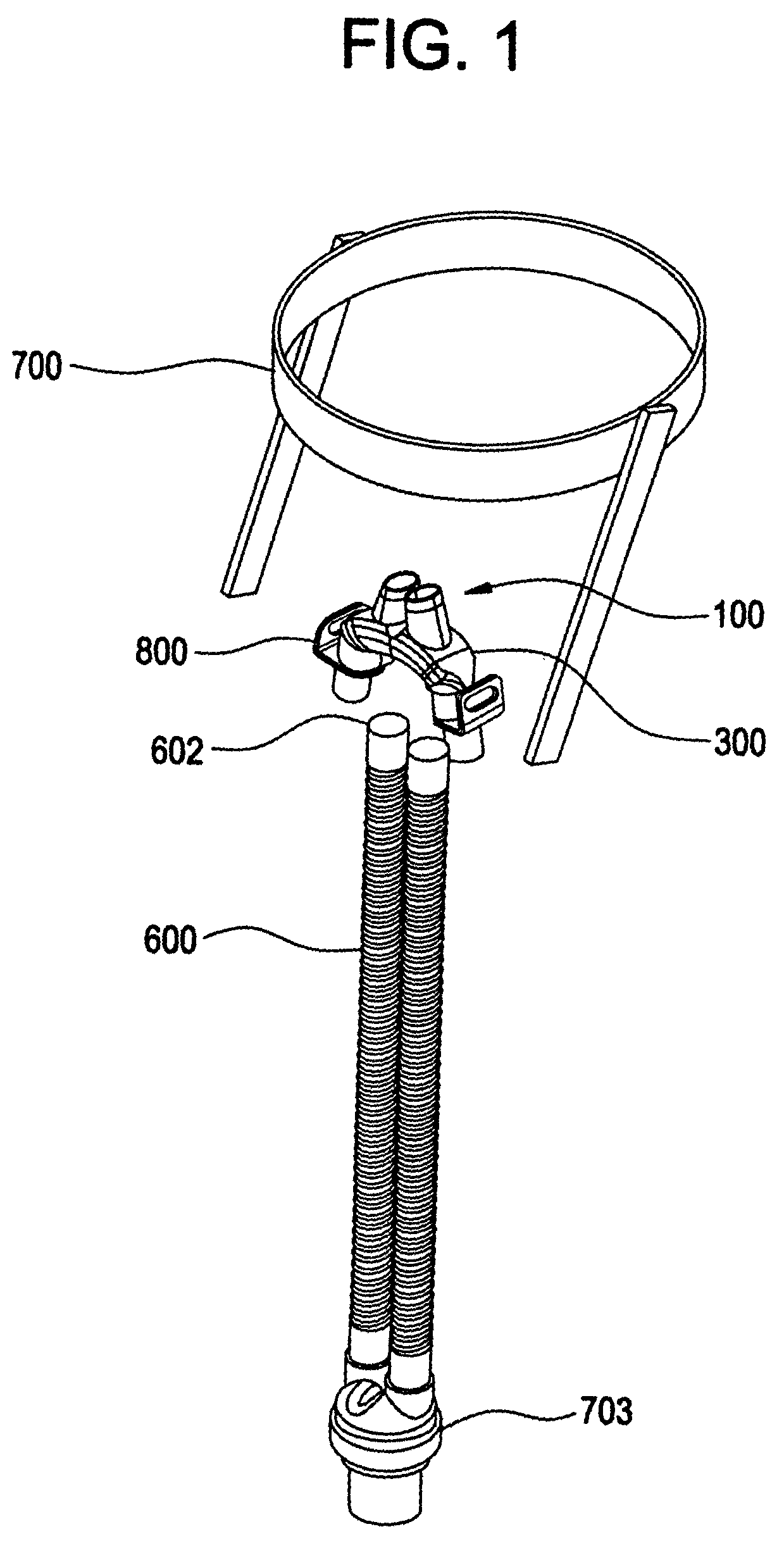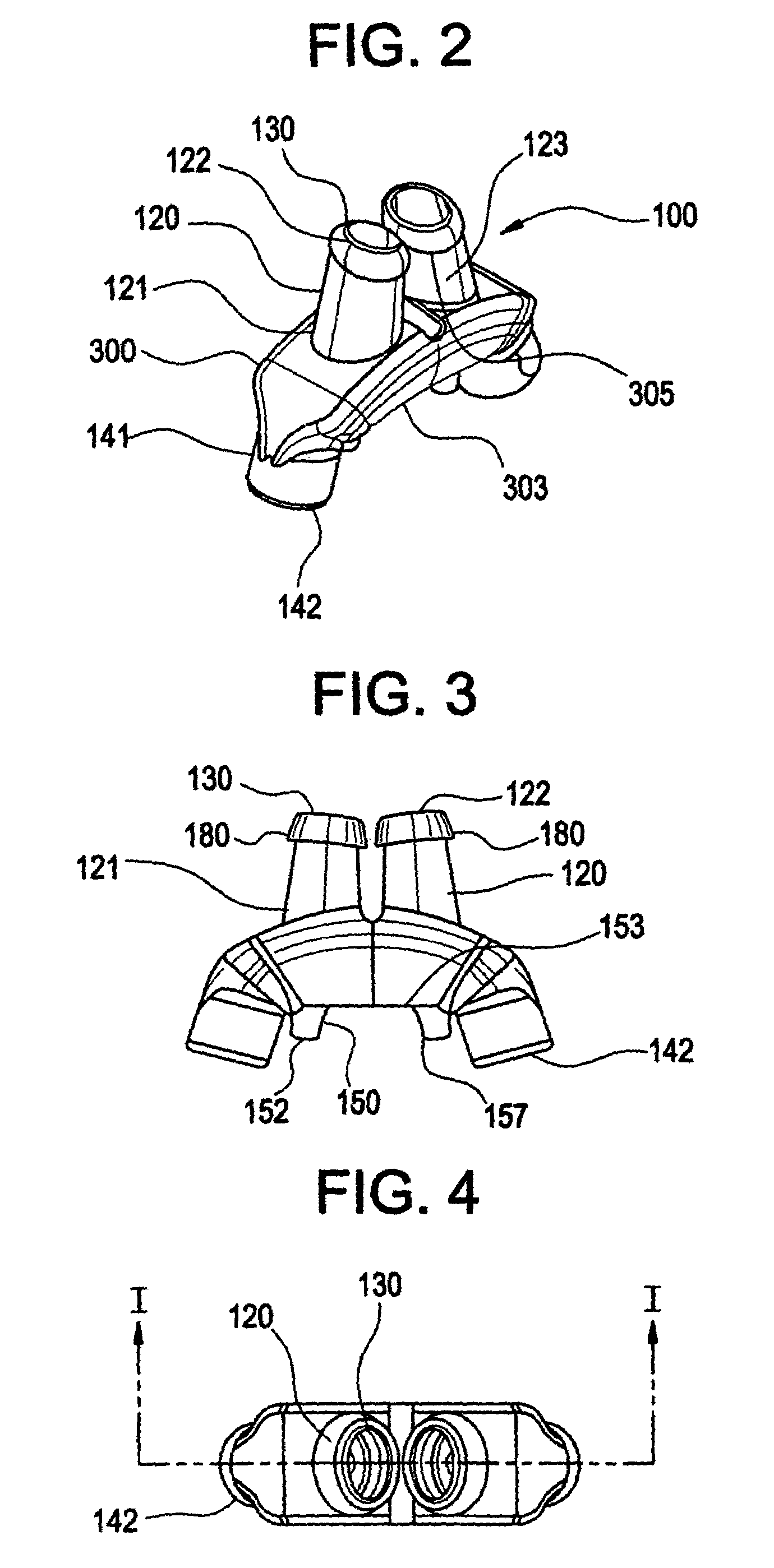Nasal interface and system including ventilation insert
a ventilation insert and nasal interface technology, applied in the field of nasal interfaces, can solve the problems of obstructive sleep apnea syndrome generally experiencing fragmented sleep, inadequate amount of oxygen flowing into the lungs, and preventing leakage, so as to achieve the effect of preventing leakag
- Summary
- Abstract
- Description
- Claims
- Application Information
AI Technical Summary
Benefits of technology
Problems solved by technology
Method used
Image
Examples
Embodiment Construction
[0043]Examples of one or more exemplary embodiments of the present invention will now be described with reference to the drawings, wherein like reference numbers throughout the several views identify like and / or similar elements.
[0044]Generally referring to FIGS. 1–20, exemplary embodiments of the present invention can provide a ventilation interface system adapted to be inserted into a nares of a user to secure the interface. A cannula 300 adaptable to be connected to a source of ventilation gas (not shown) forms a first portion 141 of an input gas flow passage to supply the ventilation gas to the user. Nasal inserts 120 are adapted to be inserted into the nares of the user forms a second portion 123 of the input gas flow passage from the cannula to a distal end of the nasal insert 130. A seal portion 122 optionally adapted to engage a portion of the nares of the user is positioned at the distal end 130 of the nasal insert. The first 141 and second portions 123 of the input gas flo...
PUM
 Login to View More
Login to View More Abstract
Description
Claims
Application Information
 Login to View More
Login to View More - R&D
- Intellectual Property
- Life Sciences
- Materials
- Tech Scout
- Unparalleled Data Quality
- Higher Quality Content
- 60% Fewer Hallucinations
Browse by: Latest US Patents, China's latest patents, Technical Efficacy Thesaurus, Application Domain, Technology Topic, Popular Technical Reports.
© 2025 PatSnap. All rights reserved.Legal|Privacy policy|Modern Slavery Act Transparency Statement|Sitemap|About US| Contact US: help@patsnap.com



